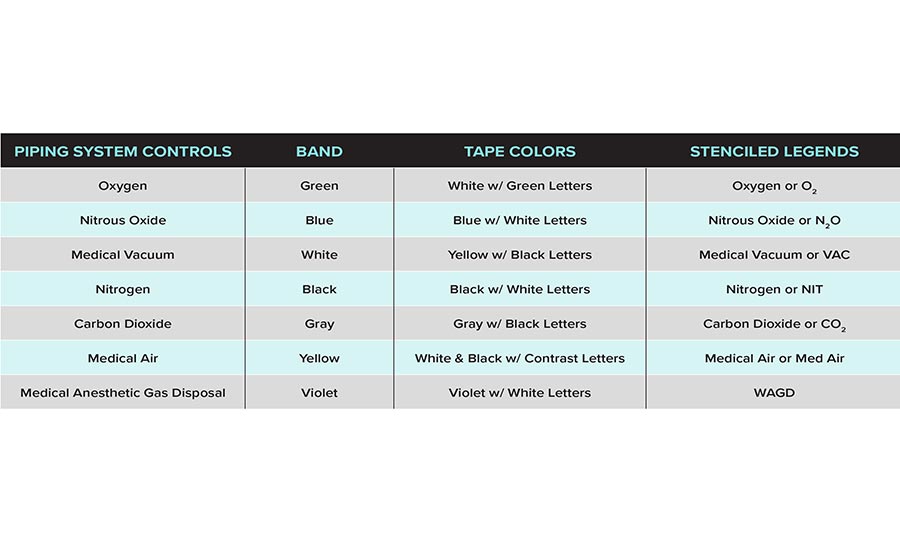NFPA 99 Health Care Facilities Code provides performance criteria for healthcare facilities that follow a risk-based approach, where it is the risk posed to patients, staff or visitors that defines safety guidelines. The main criteria of the code's scope is to provide minimum requirements for the installation, inspection, testing, maintenance and performance of healthcare facilities and keeping occupants safe as well.
NFPA 99 compliance requires that all repair, maintenance and inspections are conducted by credentialed personnel, usually a third party specializing in medical compliance.
That said, understanding and interpreting an NFPA code can often leave facility managers scratching their heads. Requirements are not always so black and white, and determining which edition of the NFPA code applies to a facility can be a frustrating endeavor.
Furthermore, because these gases are so vital, proper installation is critical. In dealing with these vital gases, there are specific questions and materials to be used for the safety of the patients and healthcare facility before installation, and correctly applying NFPA 99 varies depending on the level of care required and provided.
Medical gas requirements
NFPA 99 provides criteria that follow a risk-based approach, where it is the risk posed to patients and staff, not the type of building that defines safety guidelines.
When having gas installed for use at medical facilities, a risk assessment should always be performed. When a risk assessment is done, you should look for any potential risk of injury, death or fatality that may occur if there is a system failure or malfunction.
The four risk categories are:
Category 1: Failure of the system or equipment is likely to cause significant injury or death to patients or caregivers;
Category 2: Failure of the system or equipment is likely to cause minor injury to patients or caregivers;
Category 3: Failure of the system or equipment is not likely to cause injury, but rather a patient discomfort; and
Category 4: Failure of the system or equipment would have no impact on patient care.
Features of medical gas installation
Proper installation needs to be flawless and work efficiently. There are four components of medical gas systems that work together to deliver or remove medical gases in a healthcare facility. They are:
Pipe fitting — an essential aspect of medical gas. Materials and methods must adhere to code for safe distribution
Storage — production, storage and delivery is a complex process. Storage, as discussed within manifold rooms, is a key factor in safety. Cylinders are color-coded and labeled for identification of their contents. When dealing with "bulk" storage, bulk cryogenic liquids, such as oxygen — NFPA requires hospitals to maintain a reserve gas supply;
Delivery — after installation, ensure that gas flow and pressure are consistent and unimpeded and purity is maintained; and
Waste — the purpose of the WAGD system should always be to ensure that anesthetic gases are evacuated properly, without getting trapped in any part of the anesthetic gas system, maximizing the safety of the physicians and patients.
Medical gas requires proper installation, consistent maintenance, testing/monitoring, safety practices and inspection. It’s also important to note that approximately six installer-performed testing requirements are used as part of verification. They are:
- Initial piping blowdown to clear piping;
- A pressure test to ensure there are no leaks;
- Cross-connection test for proper pressurization;
- Pipe purge test for verification of debris;
- Standing pressure test to verify proper connections and devices are sealed internally; and
- Standing vacuum test to identifyvacuum hold time (the system should hold vacuum for 24 hours).
Acceptable plumbing materials for medical gas installation
Piping: In accordance with ASTM B819, piping for positive pressure medical gas distribution shall be seamless copper tube, identified as Types K or L, and cleaned for oxygen service. The piping shall be marked with the appropriate blue or green specifying it is used for medical gas. (Ref. NFPA 99-2018 5.1.10.1.7).
Additionally, corrugated medical tubing (CMT) is now permitted as of the 2018 edition of NFPA99. All tubing shall be installed in conformance with the requirements of the National Fire Protection Association (NFPA) Standard 99.
Vacuum tubing permits ASTM B88, Type K, L, or M, ASTM B280, or variations of stainless steel tube in addition to the allowances for positive pressure tubes.
Piping size: For positive pressure systems, NPS 1/2 inch or larger is used for installation of mains and laterals, while NPS 3/4 inch piping shall be the minimum size for mains and laterals.

Courtesy of CHT Healthcare.
Pipe identification: Medical gas piping must be identified using non-removable stickers that identify the gas content by name or chemical symbol, and color-coded according to the specific gas. Labeling shall be spaced along the pipe, at no more than 20 ft. intervals, once in or above every room, both sides of any walls penetrated, and at least once on every story height traversed.
For piping buried underground, a continuous tape or marker shall be placed immediately above the pipe to identify the pipeline by a specific name.
Valves: All valves shall be NFPA99 compliant. Valves must have a minimum Cv factor as determined by their size and must allow for in-line serviceability. Source valves must be at the immediate connection of each source to the pipeline distribution network.
Fittings: All fittings must meet applicable standards for your specific region. “All tubes, valves, fittings, station outlets and other components in medical gas systems shall have been cleaned of oxygen service…” (NFPA 99-2018, 5.1.10.1.1).
In conclusion
Faulty medical gas installation/piping can result in a hazardous situation. Whether you are renovating an older facility or new construction, healthcare facilities must have the knowledge and experience to handle medical gas safely and properly.


